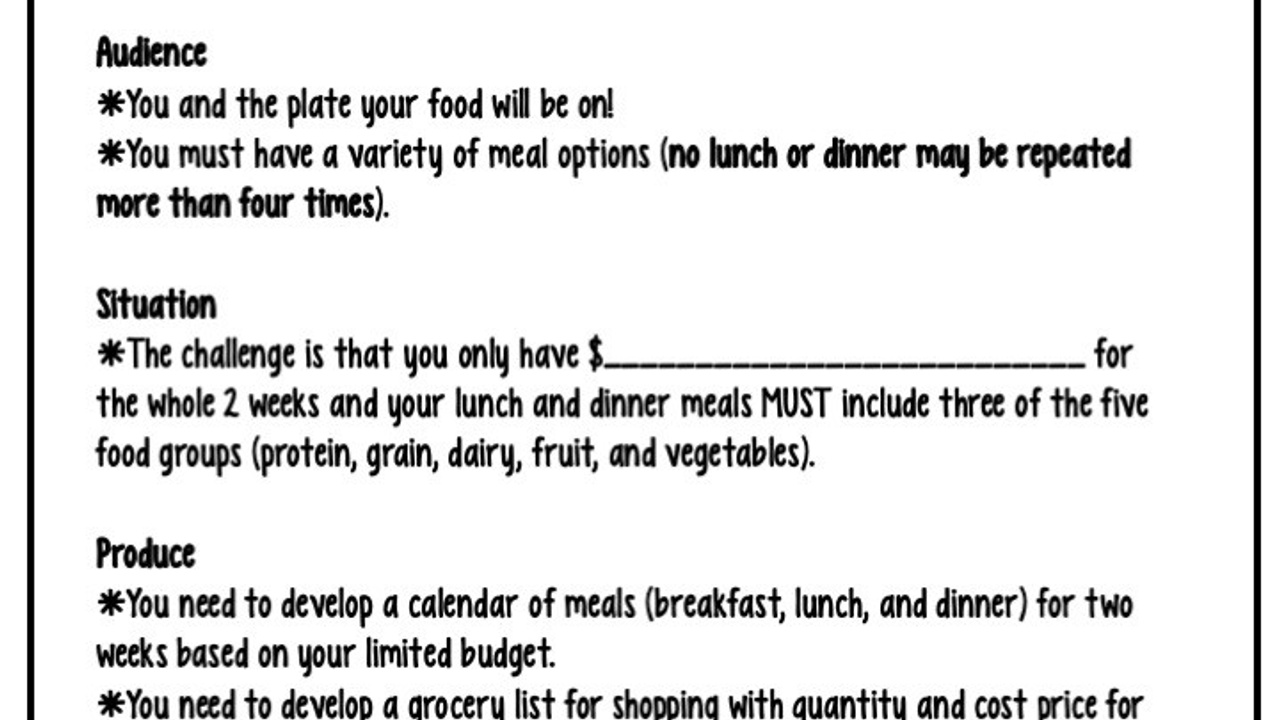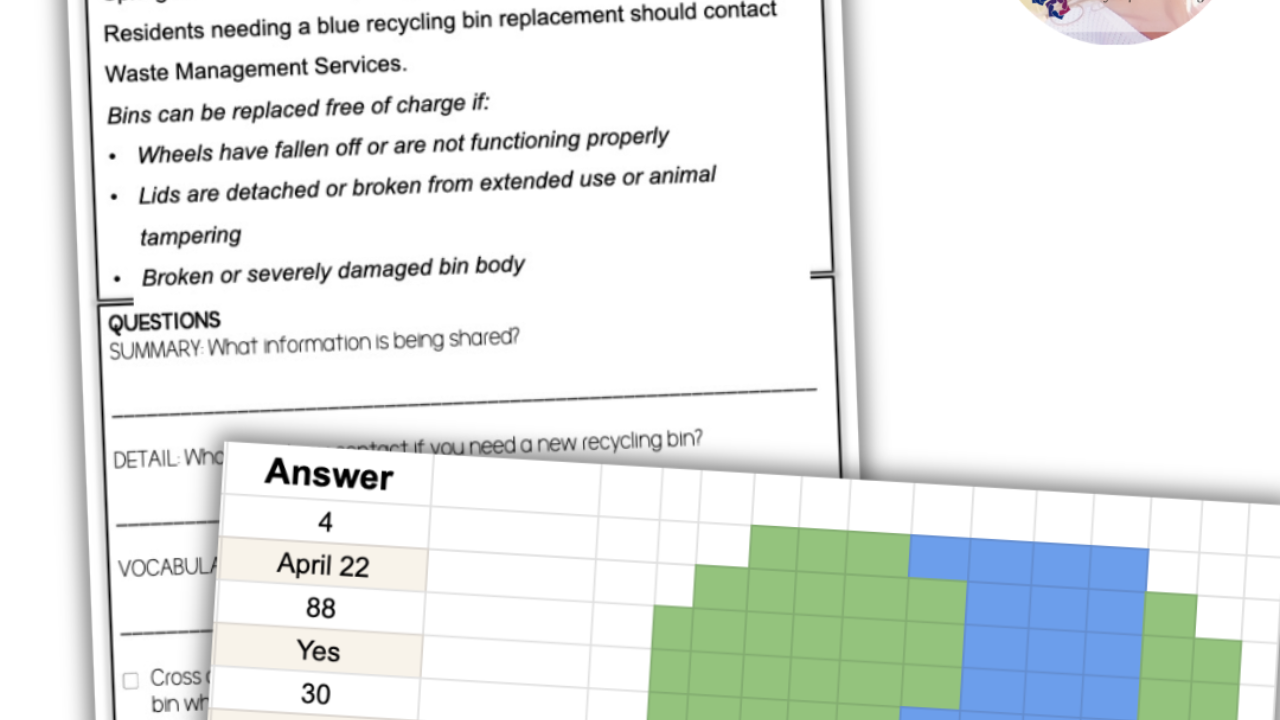How to Teach Food Budgets
Jan 23, 2021
Our next topic in the Consumer Math Blog Series is about how to teach Food Budgets. Read more about why and how you can teach Food Budgets using my Food Budget Lesson Unit (click here to get your copy).
Purpose of Teaching about Food Budgets
Besides paying rent, food is the next biggest expense in a weekly or monthly budget. Surprisingly (or not), students always completely underestimate how much food costs. It always baffled me that students thought that they could easily spend $12 on lunch at a fast food restaurant AND thought that $100 was enough money to buy food for a month. Once I realized how unaware students were about the cost of food, I decided to dedicate a whole week’s lesson to the topic.
Key-Must-Teach Concepts
Practice makes progress. This is a skill that can be strengthened with practice. As individuals begin to become aware of the food they consume, the cost of produce and such, the stronger their skill set will be. As with any new skill, it will be rocky at first but has the potential to get better and better with time.
A food budget is an estimate. You might be a slight bit under or a couple dollars over (and I literally mean only a couple), but it is a guess of how much needs to be earmarked for food. Since food is a basic necessity, it can’t be denied or brushed aside when it comes to developing a budget.
Food Budget Lesson Unit
Lesson Objective
Identify meals, ingredients, and cost of food for a (given period of time) that is within a specific budget.
Lesson Unit Break Down
Day 1- Use the reading passage to introduce the topic for the week (see suggestion below), then cover the brain teaser and visual flow chart to show how this topic relates to others. Then, check for understanding using the T/F questions and writing prompt.
Day 2- Per usual, use the time on Day 2 for Notes and Parts worksheet. As I’ve stressed before, this is a sit and get type of day, but it covers a lot of valuable information for students and moves them from the big ideas to the details all in one fell swoop.
Day 3- Using a 3 day format, the teacher will walk students through how to develop a meal plan and then subsequent grocery list and food budget. This is the time to discuss how to make healthy choices and what is included in a well rounded meal.
Day 4- Students will complete a Food GRASP- Goal, Role, Audience, Situation, and Product- by creating a 2 week meal plan and grocery list that sticks to a $100 budget. Yes, it’s possible- I’ve seen it done! However, you can adjust the budget amount to whatever feels best for your class.
Day 5- The GRASP may spill over into this day and that is okay. Use the class time as you see fit and adjust the review as needed. The task cards (see Task Card Idea below), assessment, word search, and functional math review are all available to use when your class is ready!
Reading Passage Option
If you are piggy backing this topic after you taught a Budget lesson, then I would give the reading as homework the day before you start. Think of it as moving from general (budget) to more specific (food budget). Continue to read the passage again in class, but the preview of the topic might be good for some brains!
Food Budget Lesson Unit
Listen and Learn
A Listen & Learn is a short, 5 sentence PowerPoint/Google presentation that introduces the topic using visuals and audio. Ideal for non-readers! Read about what they are and how they might be right for your classroom here.
Task Card Idea
If you are running low on time, consider hand picking 8-10 questions that you want the students to focus in on during the review. You can do the review in any way, but just cross out the questions you aren’t including on the answer sheet so students know they won’t be answering those questions.
Further Practice Idea
The best place to practice a food budget is in a grocery store, right? Hop on the bus and head to your local grocery store. If you don’t want to request money but have some time, then consider giving each student a few items to find the price of and visit a few different stores. They can gather the prices from each store and then decide what store would be best for staying in their food budget.
Ultimate Goal of the Lesson Unit
Step 1 is deciding to eat meals at home, after that the real work begins! Students need to see that the meal just doesn’t magically appear in the microwave or oven, it takes planning and money to make that happen. A food budget is a multi-step process, but is a semi-rote skill that can be learned with lots of repetition.
Food Budget Lesson Unit
May I Also Suggest Teaching
Since this lesson unit has ‘budget’ in the title, the most obvious lesson to pair this with is the Budget Lesson Unit. Consider also pairing it with Meal Planning/Prep and Comparison Shopping.
You may learn a new idea to two from these Consumer Math Blog Posts:

















